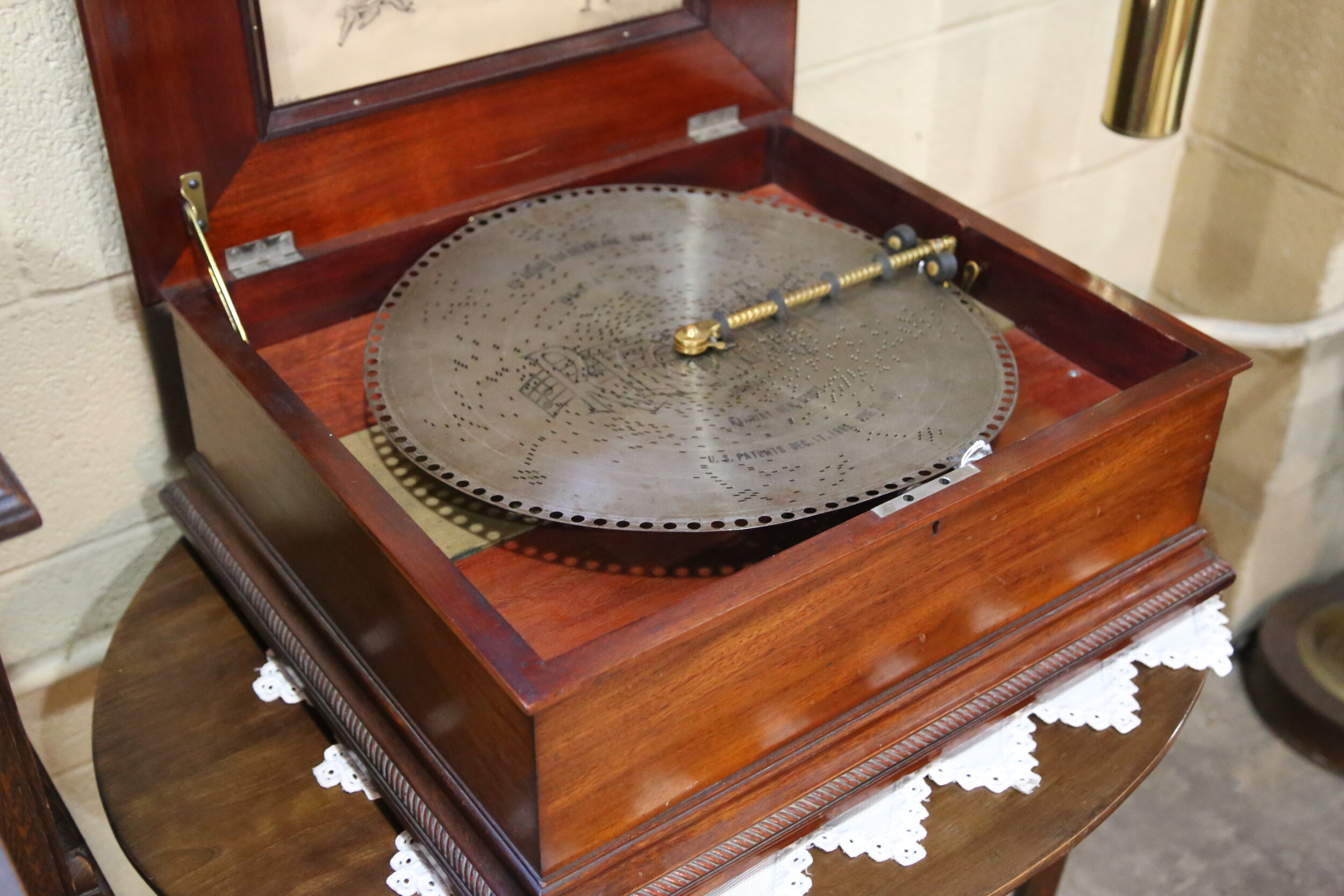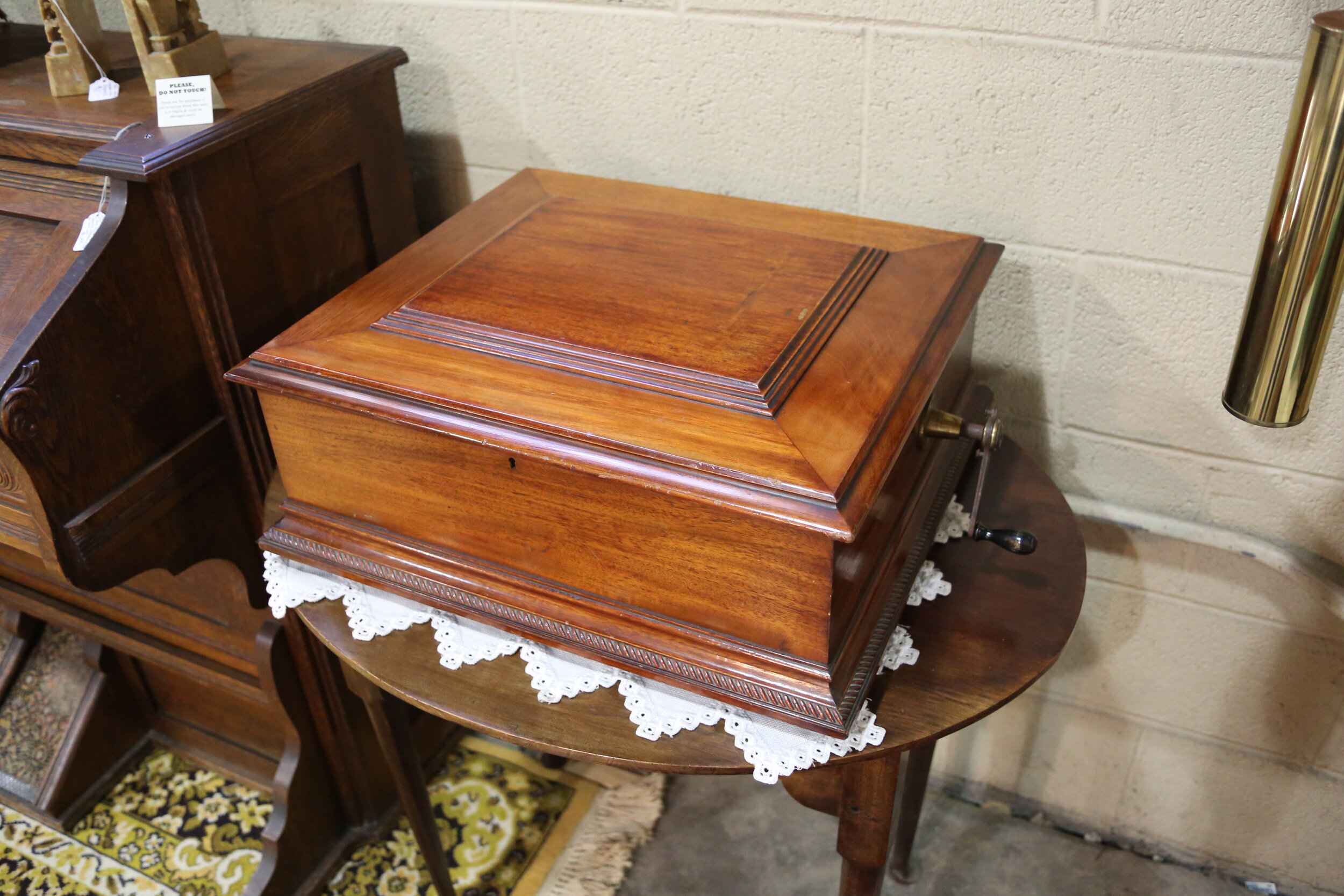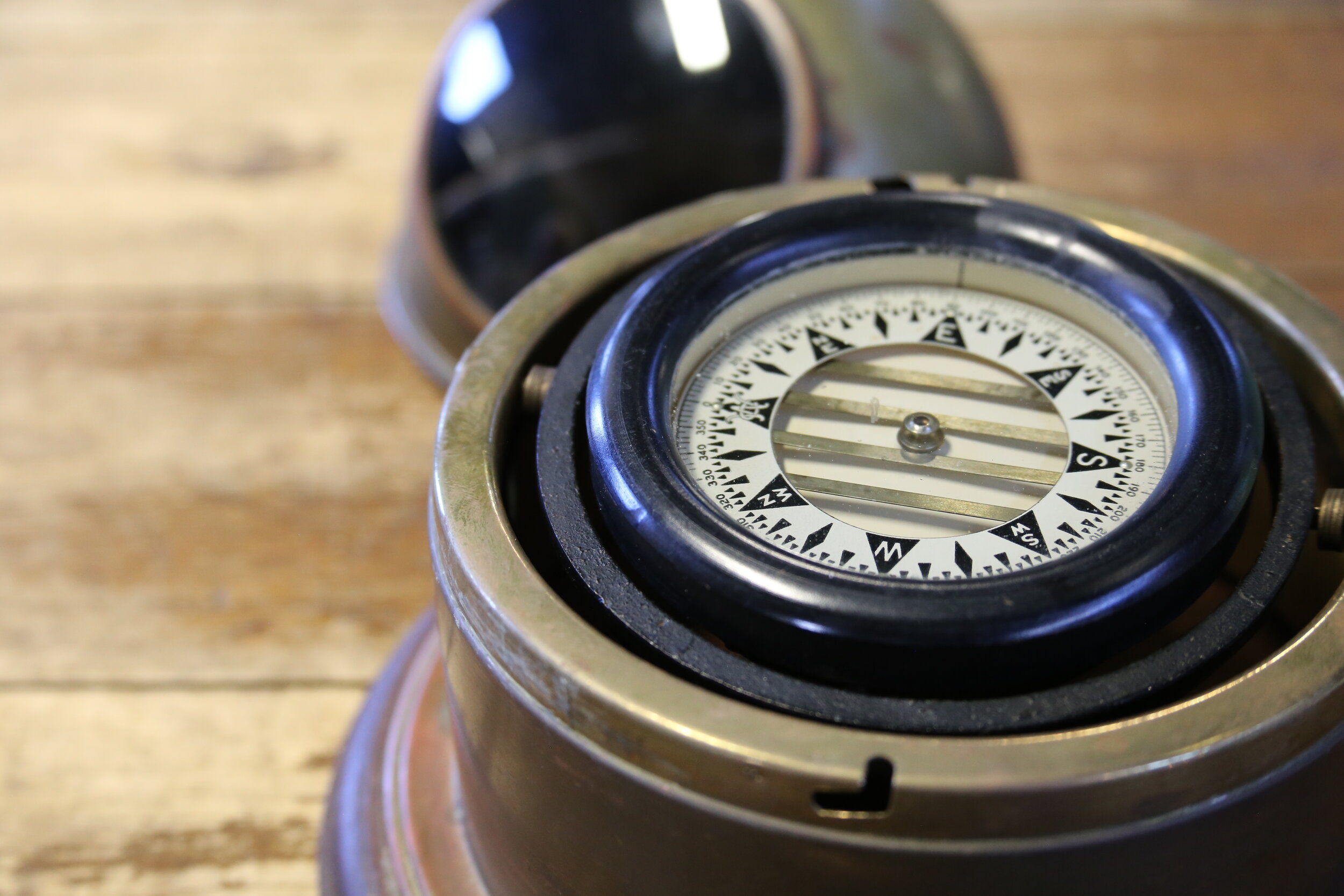Isn’t she beautiful?
This museum-commissioned desk is one of the finest we’ve ever come across. It’s beautiful to look at, but it’s the story that really makes it special.
A beautiful, handcrafted writing desk with a story as fascinating as they come.
What is it?
This desk was commissioned by Henry Ford in the early 1930s for his very own Edison Institute. It’s a master-level reproduction of Poet H.W. Longfellow’s famous writing desk (which Ford also owned).
It’s important to clarify; this isn’t a “copy” in the traditional sense…it is an “Authentic Reproduction”.
An Authentic Reproduction is a regulated term, with strict definitions that must be met. We will share the definition below, but 3 key takeaways are:
This was built by a team of the world’s finest master craftsmen
It was built on a virtually unlimited budget
It was built under the order of Henry Ford (at the time one of the world’s wealthiest & most powerful men)
To say this desk is “finely made” is an understatement.
It’s truly a work of art, rendered in wood.
But why did Henry Ford wish to reproduce it? And who is H.W. Longfellow?
Poet H.W. Longfellow?
Henry Wadsworth Longfellow is a famous American poet. He was extremely popular during his lifetime (1807 - 1882), and to this day several of his poems are recognized by scholars as American Classics.
Henry Wadsworth Longfellow, famed American poet.
The desk featured here today is based directly on H.W. Longfellow’s personal writing desk. It’s unclear exactly when the original desk was made, but it’s believed H.W. wrote many of his most famous poems sitting at that desk.
Beyond being an esteemed poet, H.W. Longfellow was also known for translating historically significant texts into English, and he even served as a professor at Harvard College.
After his death in 1882, his estate was sold to a collector, who later re-sold the estate to Henry Ford. And that’s where the story gets even more interesting.
Henry Ford opens a museum
As the Ford motor company grew into one of the world’s most successful companies, Henry Ford became incredibly wealthy, able to do or purchase almost anything he wanted.
Among many other philanthropic efforts, Ford started a museum (The Edison Institute), and began amassing and showcasing one of the most impressive collections of Fine Furniture the world had ever seen.
Henry Ford and Thomas Edison at the opening of the Edison Institute in 1929
When Ford had the opportunity to buy the Longfellow estate, he jumped at the opportunity, and in that deal he acquired H.W.’s original writing desk.
Ford fell in love with the desk. It’s beauty… fine craftsmanship… historical significance…
Ford knew this desk was an important piece of history.
After a few years of it staying in his collection, he decided to do something to make sure the legacy of this desk, and H.W. Longfellow, would live on into the future.
A look at the beautiful desk that H.W. Longfellow and Henry Ford fell in love with.
Commissioning the World’s Finest Craftsmen
In the early 1930s, Ford decided to have 10 exquisite copies of H.W.’s original desk made.*
He wanted “Authentic Reproductions”, and he wanted them made by the finest furniture makers in the industry.
With these goals in mind, Ford commissioned the Colonial Manufacturing Company, of Zeeland, MI.
The Colonial Manufacturing Company was known for having the most skilled fine furniture craftsmen, many of whom were Dutch immigrants. These Dutch immigrants had a legacy of skill in crafting fine furniture. They employed specialized techniques that were shared through generations of furniture makers.
Extremely precise “blind” dovetails. Cut by hand, by master craftsmen.
The Colonial Manufacturing Company agreed to make these special “Authentic Reproductions” individually, one piece at a time, employing their most talented craftsmen… a bit ironic considering Ford was the inventor of the modern assembly line!
*It’s believed 10 desks were produced, but exact production numbers are unclear
What is an “Authentic Reproduction”?
It’s important to clarify the definition of “Authentic Reproduction” because there are specific guidelines that must be followed, and it speaks to the exquisite caliber of craftsmanship exhibited in this desk.
“Authentic Reproduction” is a term set & defined by the American Association of Art Museum Directors as "A line-for-line copy of the original object, using the same primary and secondary materials."
Extreme attention to detail is paid when crafting Authentic Reproduction pieces.
Intricate inlay work, all cut by hand.
Usually a museum or foundation curator oversees the design process to ensure that special details, such as engraved hardware, and intangible characteristics like depth of finish and patina, are being met.
Custom made Brass hardware, identical to the originals on H.W. Longfellow’s own writing desk.
These programs ensure that high standards for quality and design authenticity are met.
Finding a museum “Authentic Reproduction” is extremely rare!
Authentic Honduran Mahogany, used exclusively throughout the entire desk.
The “Secret Compartment”…
This desk is simply beautiful. Expertly done inlay work adorns the slant front. Ornate carvings are masterfully executed. But it hides another feature… just like the original did.
The center section slides out, revealing a “secret compartment” for important documents and objects!
Inside the secret compartment, we found these original letters and literature.
Original letters and literature from the 1930s regarding this desk.
The center console has a secret… it’s removable!
Hidden on the back of the center console are secret compartments for sensitive documents and valuables.
Original Letters and Literature, discovered inside the secret compartment!
Conclusion
We feel honored to have been a steward for one of these fine desks. It’s believed less than 10 of these museum quality “Authentic Reproductions” were ever made, and who knows how many have survived over the last century.
H.W. Longfellow in his later years.
We’re glad to have chronicled the story on this special piece of history, and to have high-resolution photographs to share with the world.
This piece was for sale, but was recently sold to a very passionate collector. We wish them the best of luck, as they take on stewardship of this heirloom quality desk for the next chapter of its life.
Until next time, be well Antique Lovers…
Sincerely,
The Olde Engine Works Team
P.S. - If you enjoyed reading this, please subscribe to our Antiques Insider club. You’ll get the latest Rare Antique Stories sent to you when they’re published, and we send out discounts exclusively to members of the club!
Interesting stories and saving money?!
It’s the perfect time to sign up, please scroll all the way down and use the sign-up form at the bottom of our website.
History Sources:
(Additional information thanks to Wikipedia)
(Additional information thanks to AutoMedic)
(Additional information thanks to Worth Point)
(Additional information thanks to Worth Point)


































